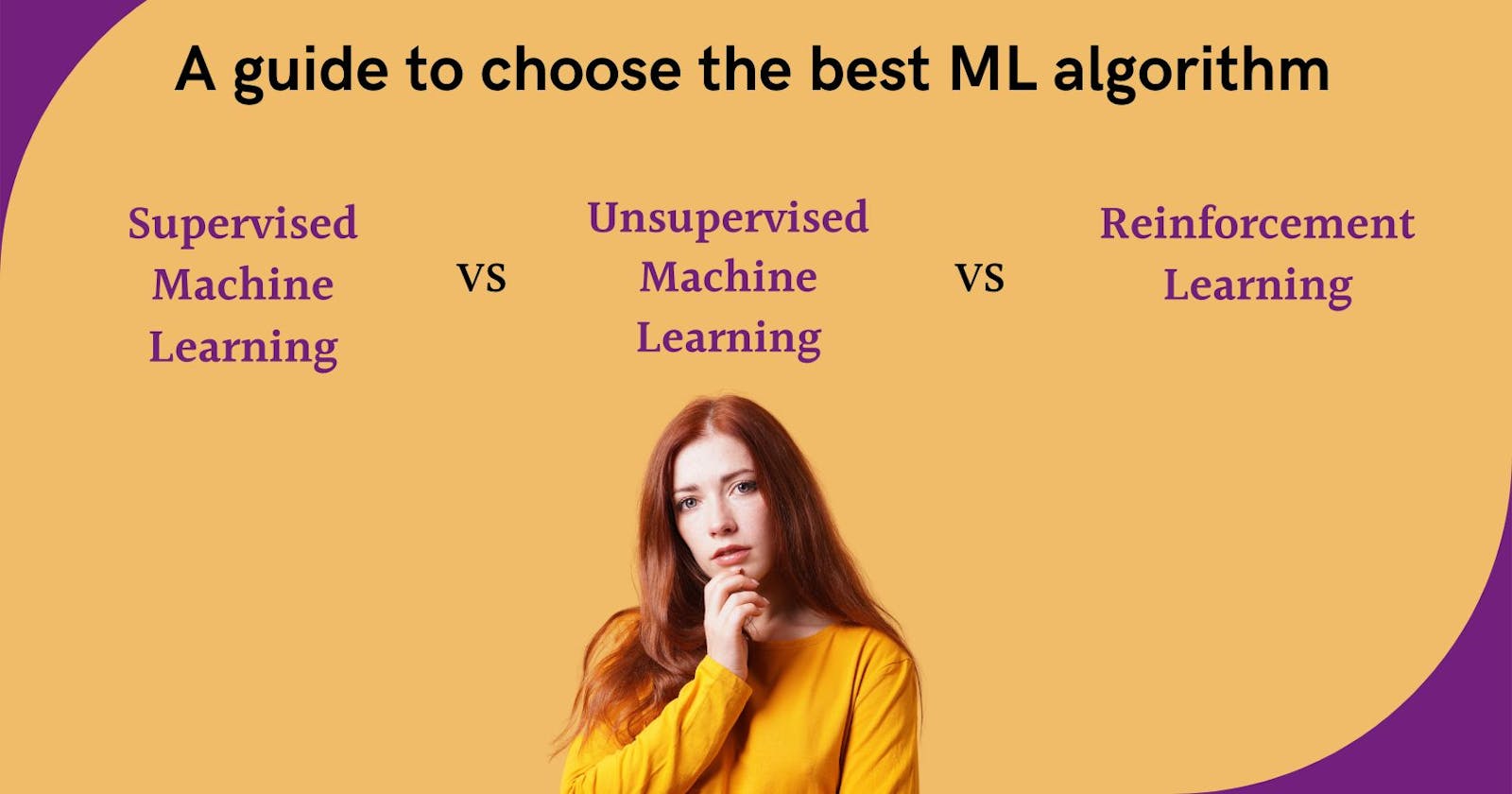A comparison of different machine learning algorithms and when to use each one
Navigating the Landscape of Machine Learning Algorithms: A Guide to Choosing the Right Tool for the Job
Machine learning is a rapidly growing field that has revolutionized many areas of science and technology. It involves using algorithms to automatically learn patterns and relationships in data, without explicit programming. There are many different types of machine learning algorithms, each with its own strengths and weaknesses. In this article, we will compare and contrast some of the most commonly used machine learning algorithms, and discuss when it is appropriate to use each one.
The 3 main types of machine-learning algorithms are:
Supervised Learning Algorithms
Unsupervised Learning Algorithms
Reinforcement Learning Algorithms
Supervised Learning Algorithms
Supervised learning algorithms are used to predict a target variable (also known as the output or dependent variable) based on one or more input variables (also known as the features or independent variables). The algorithm is "trained" on a dataset that includes both the input variables and the corresponding target variables, and the goal is to make predictions about new, unseen data. There are two main types of supervised learning algorithms:
Regression algorithms: These algorithms are used to predict a continuous target variable, such as the price of a house or the likelihood of a customer churning. Examples of regression algorithms include linear regression, logistic regression, and support vector regression.
Classification algorithms: These algorithms are used to predict a categorical target variable, such as whether a customer will default on a loan or whether a patient has a certain disease. Examples of classification algorithms include k-nearest neighbours (KNN), decision trees, and random forests.
Unsupervised Learning Algorithms
Unsupervised learning algorithms are used to find patterns and relationships in data without any prior knowledge or labels. The algorithm is not given any target variables to predict, and the goal is to discover underlying structures in the data. There are two main types of unsupervised learning algorithms:
Clustering algorithms: These algorithms are used to group data points into clusters based on similarity. Examples of clustering algorithms include k-means and hierarchical clustering.
Dimensionality reduction algorithms: These algorithms are used to reduce the number of input variables (features) in a dataset while preserving as much of the original information as possible. Examples of dimensionality reduction algorithms include principal component analysis (PCA) and singular value decomposition (SVD).
Reinforcement learning algorithms
Reinforcement learning algorithms are used to train agents (such as robots or software programs) to interact with an environment and learn from the consequences of their actions. The algorithm is given a reward signal that indicates whether a particular action is good or bad, and the goal is to maximize the cumulative reward over time. Examples of reinforcement learning algorithms include Q-learning and SARSA.
When to use each algorithm?
So, which algorithm should you use for your machine-learning problem? Here are some general guidelines to help you decide:
If you have a large amount of labelled data and you want to predict a continuous or categorical target variable, then a supervised learning algorithm is likely the best choice.
If you have a large amount of unlabeled data and you want to discover underlying structures or patterns, then an unsupervised learning algorithm is likely the best choice.
If you want to train an agent to interact with an environment and learn from its actions, then a reinforcement learning algorithm is likely the best choice.
Of course, there are many other factors to consider when selecting a machine learning algorithm, such as the complexity of the problem, the size and quality of the data, and the computational resources available. It is always a good idea to try out multiple algorithms and compare their performance, to see which one works best for your specific problem.
Inference
Machine learning algorithms are a powerful tool for automatically learning patterns and relationships in data. There are many different types of machine learning algorithms, including supervised learning algorithms, unsupervised learning algorithms, and reinforcement learning algorithms. Each type of algorithm has its own strengths and weaknesses and is best suited for certain types of problems. When selecting a machine learning algorithm for a particular problem, it is important to consider the complexity of the problem, the size and quality of the data, and the computational resources available. By understanding the characteristics and capabilities of different machine learning algorithms, it is possible to choose the most appropriate one for a specific task.
Thanks for reading ❤️
